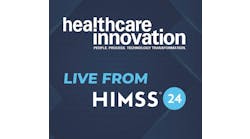Can complex social determinants of health (SDOH) data use be streamlined and made more manageable and useful for a variety of purposes? Yes, said presenters at the HIMSS Conference in Orlando earlier this month. On Thursday, February 14, Rosy Chang Weir, director of research at the Association of Asian Pacific Community Health Organizations (AAPCHO), based in the San Francisco suburb of San Leandro, and Andrew Hamilton, chief informatics officer at AllianceChicago, a community health collaborative based in central Chicago, shared with HIMSS19 attendees their stories of success with the use of SDOH data, using a data protocol called PRAPARE (Protocol for Responding to and Assessing Patient Assets, Risks, and Experiences).
“Why is collecting data on social determinants of health important? If you were at the opening keynote session,” Weir said, “you may have heard [former National Coordinator for Health IT] Karen DeSalvo say that in order to bend the cost curve, we really need to collect and use social determinants of health data.” Among the “socio-ecological” elements in SDOH data, she cited demographic data, institutional data, data from corporations, business, and government; and data related to social inequities (neighborhood conditions (social, physical), residential segregation, workplace conditions). Medical model-related data elements include risk factors and behaviors, data related to disease and injury, and mortality data. “If you can document how complex your patients are clinically and non-clinically, and can [document socio-ecological factors], you can advocate for [optimal] care models,” Weir noted.
Meanwhile, the PRAPARE protocol, Weir told the audience, is “a national standardized patients risk assessment protocol designed to engage patients in assessing and addressing social determinants of health.” What’s more, she told the audience, “This tool was really a great collaboration between AAPCHO and NAT, the National Association of Community Health Centers, and the Oregon Primary Health Association,” the three groups that created it. Importantly, the reach of this initiative is quite broad, as NAT, the largest nationwide network of primary and preventive care in the U.S. healthcare system, encompasses 27-plus-million patients at 10,400-plus sites—in other words, 1 in 12 U.S. residents. And among that population, 1 in 6 are Medicaid beneficiaries, 1 in 3 are uninsured, 1 in 3 are living in poverty, and 1 in 3 are homeless.
And one of the key elements in this, she said, was that, “As part of our development process, we wanted to ensure that PRAPARE had free templates widely available nationwide.” Right now, she said, speaking of major electronic health record (EHR) productions, “Free templates are available within NextGen, eClinicalWorks, GE, Epic, Cerner, Greenway Intergy, and Meditab.” In development are templates within Greenway Success Allscripts, Athena, and Meditech.
At its core, PRAPARE asks 15 questions of providers in order to assess 14 core social determinants of health domains, some of them related to the Uniform Data System for federal health center reporting (those domains can be auto-populated), and some related to other data sets, including optional ones. Core data elements include race, ethnicity, veteran status, farmworker status, English proficiency, income, insurance, neighborhood, and housing; and education, employment, material security, social integration, stress; as well as, optionally, data elements around incarceration history, transportation, refugee status, safety, domestic violence.
Importantly, Weir said, “We wanted to make sure that all the measures we collected would align with more than one initiative,” as well as that the process would be “evidence-based and stake-holder-driven,” as well as ”workflow-agnostic.” In implementing the protocol, she said, “We’ve found an average of about five risk factors.” Meanwhile, she added, “The number of SDOH risks doubles in high-risk populations.” Fortunately, PRAPARE is easy to administrator, and can be implemented using a variety of different workflows and staffing models. Significantly, she said, “It identifies new needs, and leads to positive changes at the patient, health center, and community/population levels, and facilitates collaboration with community partners.” And it takes only 3-5 minutes to administer.
What’s more, she said, “I wanted to talk about the importance of not just collecting SDOH data, but also intervening. From the beginning, PRPARE was about addressing needs using data. We need standardized data on patient social risk/barriers from PRAPARE, as well as response data—standardized data on interventions (enabling services and others).” Both are necessary, she said, in order to demonstrate value to payers; advocate for upstream investments; seek adequate financing to ensure interventions are sustainable; and achieve an integrated, value-driven delivery system, and reduce total cost of care.
Harvesting information and insights.
AllianceChicago’s Hamilton noted that “Every FQHC is required to submit an annual report to the federal government, Uniform data System (UDS),” which has “been existence at least since the 1980s,” and is “one of the largest federal databases on the 27-million-plus Americans receiving care through our system. As Rosy mentioned, we’re also trying to get a sense where these standard data sets are available,” he added.
Right now, he said, six vendors have incorporated screening tools related to this process, while five vendors have incorporated population health tools, five have incorporated referral and care transition tools, and three have incorporated analytic and reporting tools.
“There are a number of data and performance management programs that are increasingly including this data,” Hamilton said. “NCQA, PCMH,” and related entities, “are driving this, as are “the certification requirements in the public comment periods. There have often been calls to action suggesting we should do more at a national level to standardize the data. Of course, we’d have to develop common data standards,” he added.
Importantly, he said, “We’re trying to harvest everything we can harvest in the marketplace to understand what sets have been developed, and then create a consensus plan going forward. Siren Network: a network of researchers who have been working across the domains to put together this compendium.” What’s more, he said, “From our perspective, there are a couple of significant areas in which we know interoperability would be helpful around this data: in summary of care data, in population health management, in HIE [health information exchange], and in how we use data from an analytics and predictive model standpoint, and in research. In a learning health system context, very helpful.”
An important result in this process, Hamilton continued, is that “We produce a screenshot of what produce at the end of visit. We’re asked all the time how we can include SDOH risk data at the point of care. It’s clear to us that our patients are trying to overcome enormous social and community barriers that inhibit them from their success. So We’ve mocked up a series of prototypes with rendering this data,” and “We’ve been holding focus groups throughout Chicago to audience-test this with patients/consumers.”
Where the rubber meets the road, Hamilton said, is when the PRAPARE protocol can be used to improve processes like diabetes screening. The challenge, he said, is the number of patients who would not normally be screened. Why? Because many patients seen in community health settings are not eligible for screening under current guidelines, but will eventually develop diabetes. Being able to score their potential for developing diabetes is one of the gains made through the protocol.
And all of this in turn is connected to PCORNet, the National Patient-Centered Clinical Research Network, and the PCORNet Common Data Model (CDM), which, as described on the PCORNet website, is “patient-centered approach to building an agile research platform is at the heart of PCORnet, and data serves as the backbone. Considering the large number and diverse types of organizations that are part of PCORnet, we all benefit from having a streamlined, efficient way to use the data produced by these organizations. Enter the PCORnet Common Data Model,” the website notes.
“We want to extend that model,” Hamilton noted. Indeed, NACHC has been awarded a cooperative grant from the CDC (Centers for Disease Control and Prevention), with a clinical focus on cardiac disease, hepatitis B and C, family planning, post-partum diabetes, and adult vaccination. “We want to infuse this data into our programs, and want to improve the evidence and understanding of how social and economic data improve care management,” he added.


